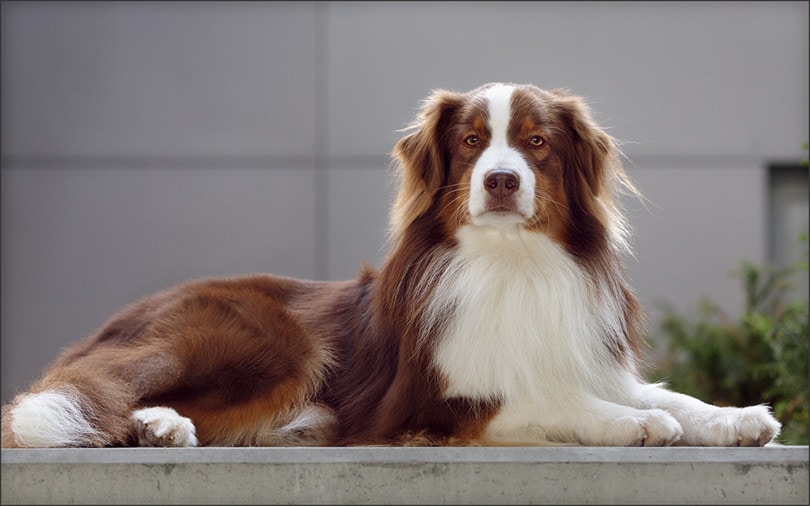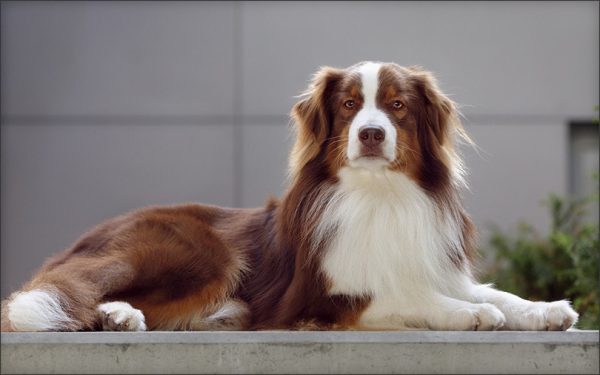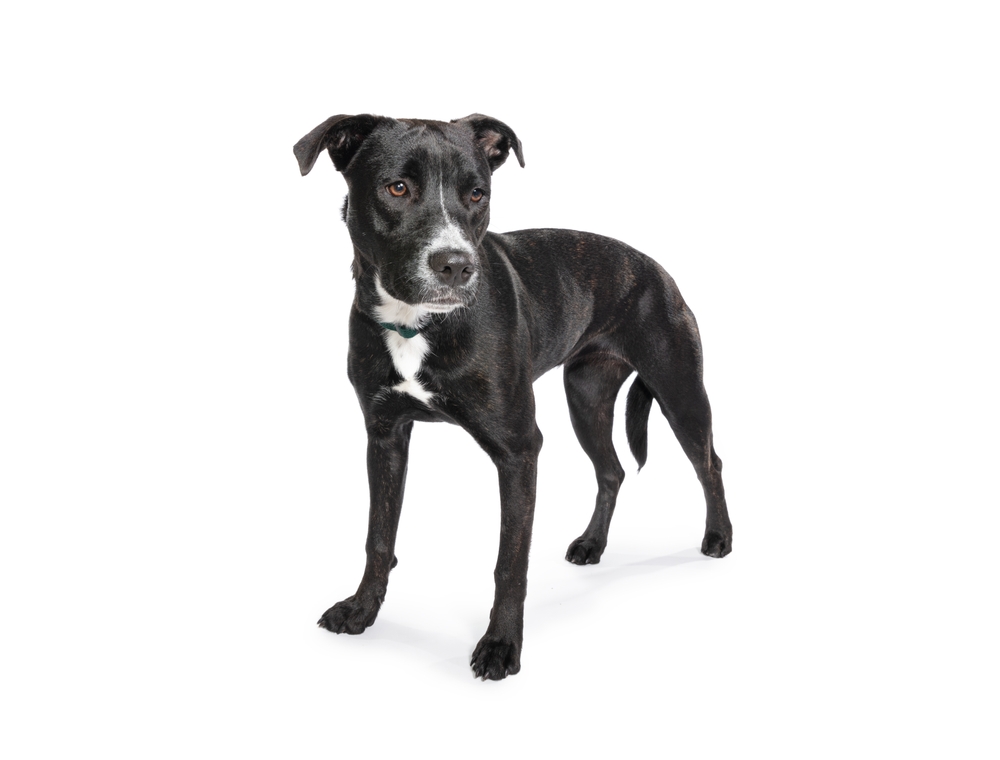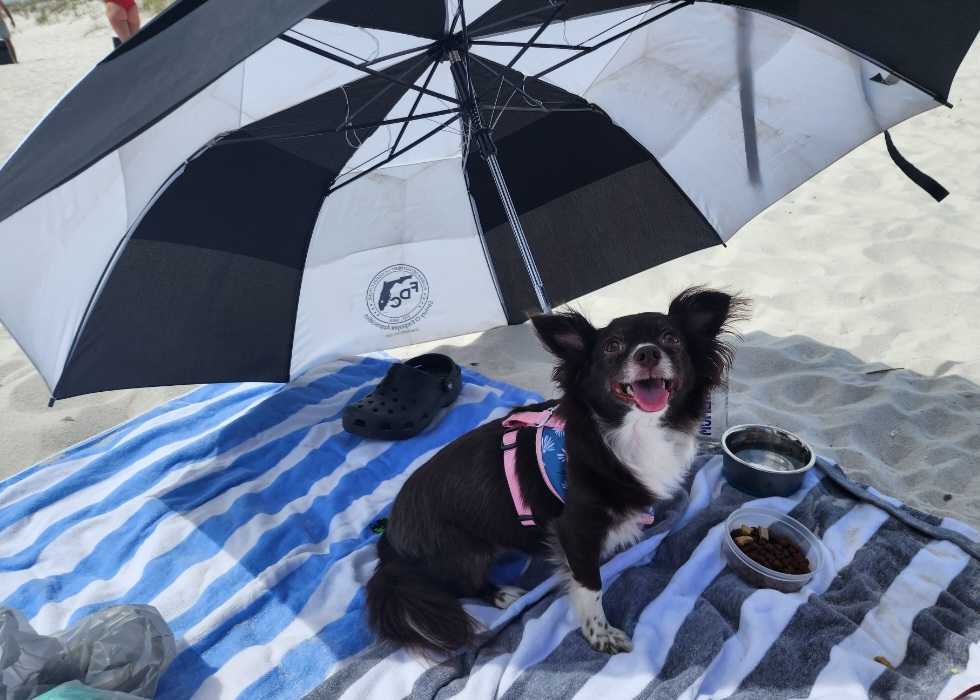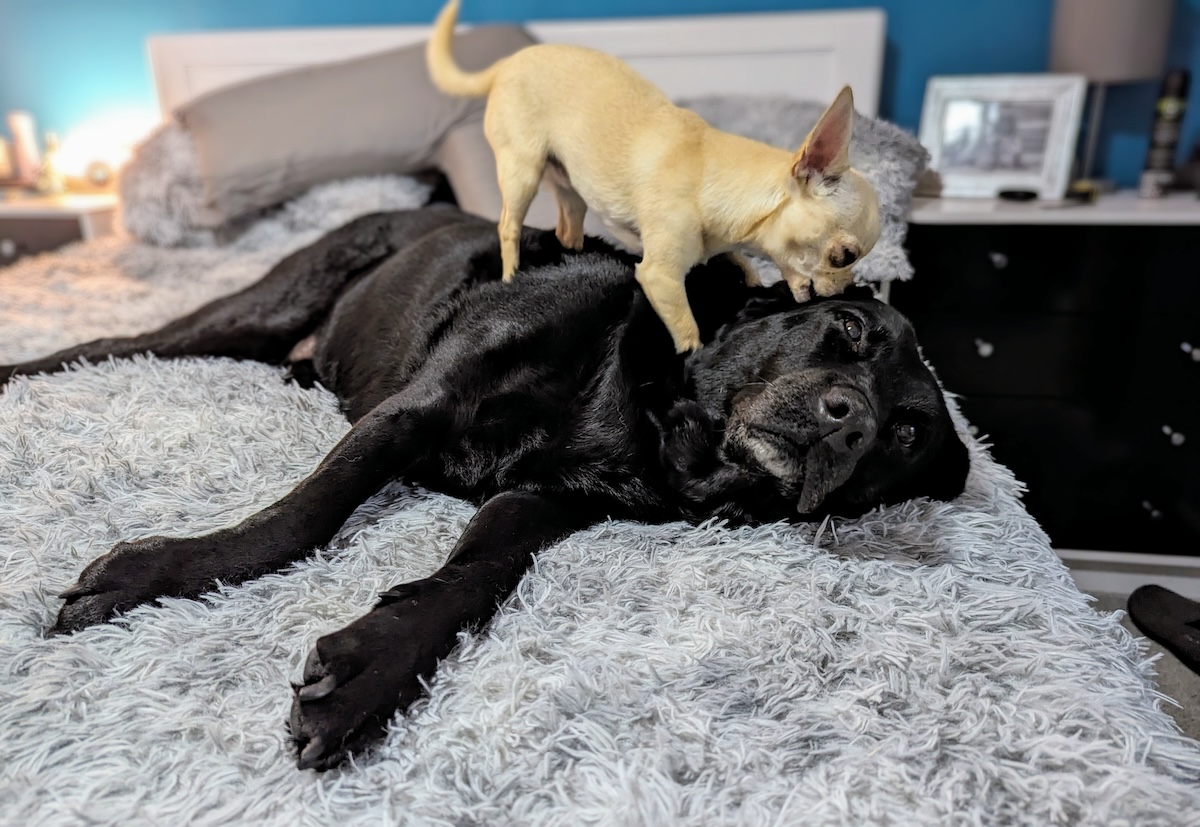Click to Skip Ahead
In the Australian Shepherd dog breed, the red color is recessive and is therefore more difficult to achieve, as it requires1 the parent dogs to have two recessive red genes and no dominant black genes. The red coat is presented in different tones that range from light cinnamon to dark liver.
The Red Tri Australian Shepherd is an Australian Shepherd with tri-coloring—a red body and a white chest, legs,belly collar, and face marks. Unlike Australian red or red bi-colors, the tri has some copper points. This dog is not to be confused with the Red Merle Australian Shepherd, which has brown and white hair with red spots.
Breed Overview
Height
18 – 23 inches
Weight
40 – 65 pounds
Lifespan
13–15 years
Colors
Black, red, red merle, blue merle
Suitable for
Homes with yards, families with and without kids
Temperament
Friendly, loyal, affectionate, playful, intelligent, trainable
Like all Australian Shepherds, though, the Red Tri is protective and loyal and has great herding instincts. If you’re thinking of getting one, take a look below to find out more about this color of Australian Shepherd.
Australian Shepherd Characteristics
The Earliest Records of Red Tri Australian Shepherds in History
Despite their name, Australian Shepherds aren’t actually Australian. In fact, the Australian Shepherd we know and love today is an American breed that came about from out West. The breed is also a conglomeration of other sheepdog breeds, some of which we’re sure of and others only theorized.
The Australian Shepherd’s earliest roots likely date back to the 1500s and the Spanish. Spaniards coming to the New World needed meat, so they imported Churras sheep from back home, along with the dogs that herded them. Carea dogs have merle coats and blue eyes, and it is believed that these Carea-like dogs were described in early accounts as wolf-like and either black and tan or yellow in color.
Then there are the Carea Leonés, also from Spain, who herded Churras. This breed has merle coats and blue eyes like some Australian Shepherds, yet there’s no actual evidence that they came to the New World. So, this breed may or may not have played a role in the genetics of the Australian Shepherd.
Over the years, the Spaniards in the New World created a sort of generic sheepdog that became popular in the West. But then, farmers who lived in the East and Midwest sent British-derived sheepdogs to the West. These dogs were often either merle, black with white, tan with white, or tricolor; they were also sometimes born with no tails or only half tails, like the Australian Shepherd. Then, in the late 19th century, more British-derived sheepdogs arrived in the West, though via Australia (which is most likely where the name of the breed came from).
As you can see, the Australian Shepherd, no matter the color, has quite an interesting and mixed background! However, we do know that today’s Australian Shepherd was developed from United Kingdom rural dogs, as presented in the 2017 Cell Reports Study.
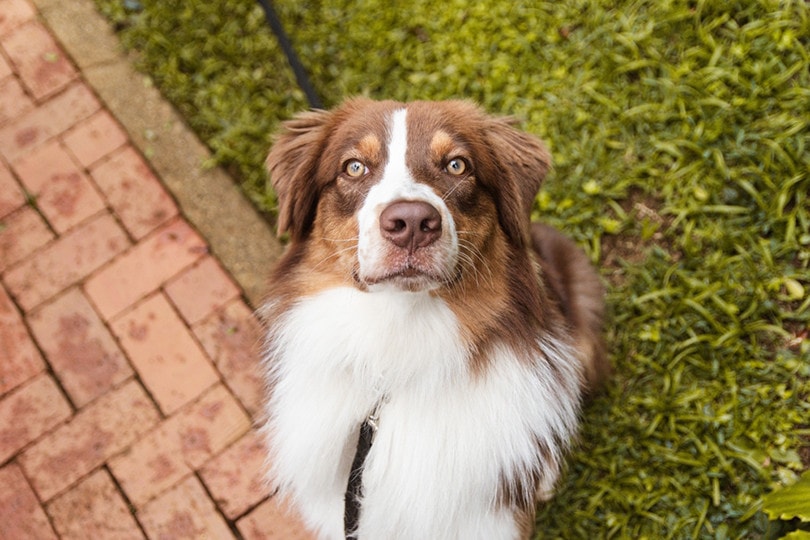
How Red Tri Australian Shepherds Gained Popularity
Australian Shepherds were bred from a variety of different breeds whose job was to herd sheep, and this is what the breed was initially used for in America. In fact, they’re still often used as herding dogs, but it was one particular herding job that led to them becoming more popular with the general population.
What was this job? Performing as show dogs in rodeos during the 1950s and 1960s! Australian Shepherds began helping herd bulls at rodeos; they also sometimes did tricks for the audience. This is how the general public got to know them.
Though this breed is still used as herding dogs, they’ve also excelled in other jobs. Some of the other jobs the Australian Shepherd commonly performs are as service dogs and search-and-rescue dogs. You won’t find them working with the military or police often, though, as the breed isn’t very territorial.
Formal Recognition of Red Tri Australian Shepherds
After the Australian Shepherd gained popularity from performing and helping at rodeos, The Australian Shepherd Club of America was formed in 1957 to aid in promoting the breed to the public. In 1979, this breed was recognized by the United Kennel Club; it was then recognized by the AKC in 1991. Following these, the Australian Shepherd was later recognized by the Fédération Cynologique Internationale.
Red Tri Australian Shepherds are well-accepted and recognized as an official color and coat pattern combination in this active breed standards. Although, as mentioned before, red is a recessive gene for Australian Shepherds, and the tan points in the coat are determined by one of the several versions of the agouti gene: tan or no tan. This is along with the influence of another gene called K, which, if present in its dominant version, will result in no tan trim. So, with all those variants and the many other combination possibilities of coat colors and patterns, you might have a challenging time finding a Red Tri.
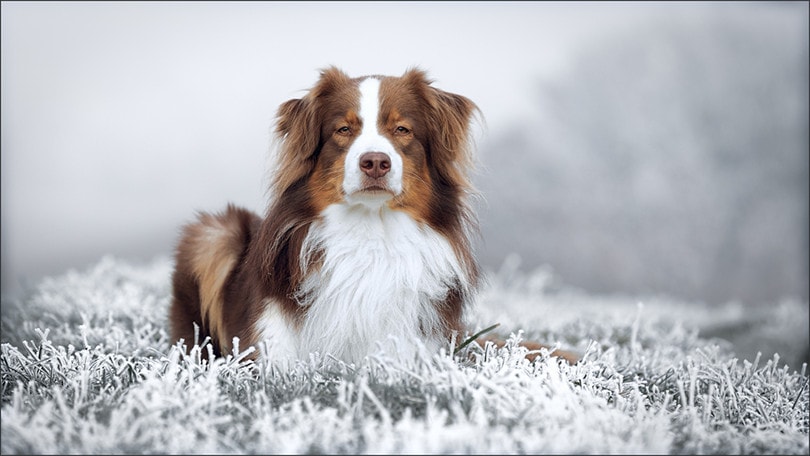

Top 5 Unique Facts About Red Tri Australian Shepherds
Ready to learn some unique facts about Red Tri Australian Shepherds? Impress your family and friends by spouting off some knowledge about these dogs next time they come up in conversation!
1. It’s not unusual to dock an Australian Shepherd’s tail
What is docking? It’s the practice of surgically removing a part of the tail. Originally, this was done to Australian Shepherds with the argument of preventing them from getting injured while herding; however, at Dogster, we consider tail docking as an unnecessary elective procedure in modern pet dogs. Moreover, tail docking and ear cropping are unnecessary and archaic practices that are slowly becoming illegal in some countries.
2. Sometimes, though, Red Tri Australian Shepherds are born with short tails
Approximately one in five of these pups will have a naturally short tail, so they didn’t have elective surgery to have their tails docked. Red Tri Australian Shepherds born this way are usually a bit more expensive than Australian Shepherds with a regular-length tail because some think it is a desirable physical characteristic.
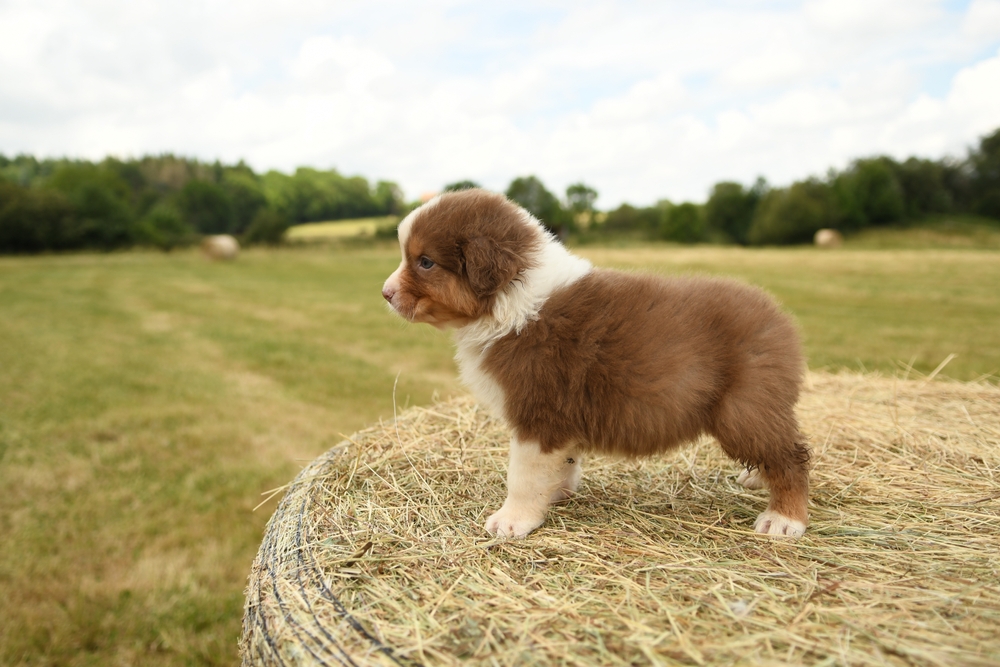
3. Some indigenous peoples of North America thought Australian Shepherds to be sacred
Australian Shepherds sometimes have pale blue eyes that look ghostly. According to legend, some indigenous peoples referred to the breed as “ghost eye” and considered them sacred.
4. Sometimes Australian Shepherds are born with different eye colors
While not all dogs of this breed will be born with different eye colors, as a whole, the breed is more prone to having one eye a different color than the other. Occasionally, an Australian Shepherd may even have a single eye that is two colors! This is due to a recessive gene that runs in the breed. Red Tricolor Australian Shepherds will commonly have amber eyes, although if the recessive gene is expressed, some will have one or two blue eyes.
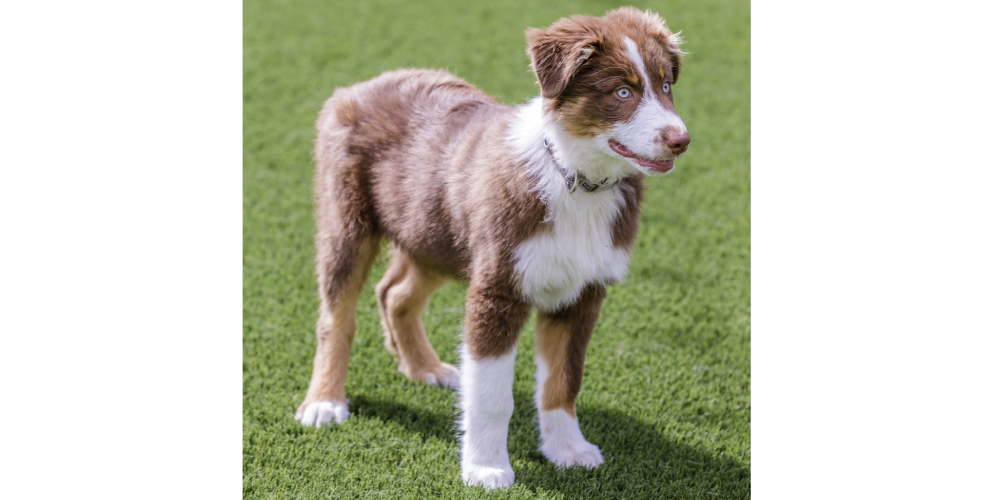
5. An Australian Shepherd was once a frisbee champ!
The dog’s name was Hyper Hank, and he became famous in the 1970s for his frisbee skills. The pup was so good at frisbee competitions that he and his owner featured at the Super Bowl and got to visit with President Carter at the White House.
Does the Red Tri Australian Shepherd Make a Good Pet?
Red Tri Australian Shepherds can make good pets—for the right people. Because of the breed’s sharp herding instincts, they’ve been known to try to herd anything and everything, including children. If a Red Tri Australian Shepherd tries to herd a child and the child runs away, it could trigger those herding instincts further—and that could include snapping and barking at the child. So, for homes with young children, the Red Tri Australian Shepherd isn’t recommended. Likewise, this dog may not be your best bet if you do not have enough space to allow them to run and burn off some energy.
The Red Tri Australian Shepherd would make a wonderful pet for a family with teens or a single person that stays active, though. Because the Australian Shepherd is a working dog, regardless of their coat color and pattern, they all need lots of exercise and stimulation to stay mentally engaged. Otherwise, you’ll have one bored pup on your hands, which can lead to destructive behavior. But, well managed, this breed is sweet, protective, and loyal

Conclusion
The Red Tri Australian Shepherd is a gorgeous dog, they have red coats on the top with white markings on the chest, neck, legs, and face along with some copper or tan spots. In this highly active breed, the red color is expressed by a recessive gene. The Australian Shepherd breed, though, is well-known (and well-loved) and has quite a storied history! From UK rural dogs to rodeo show stars, the Australian Shepherd breed has gotten around. If you do manage to find a Red Tri, you’ll have a special and very active companion who’s always up for work and adventure.
Featured Image Credit: Fotoschauer, Shutterstock

